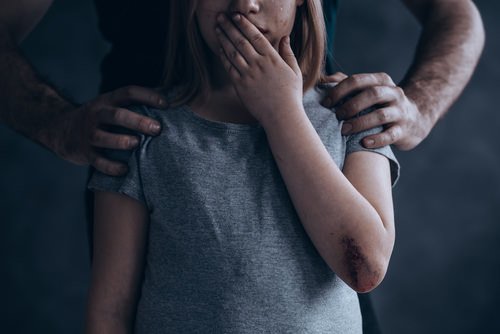In California, the term mandated reporter refers to categories of professionals who are required by law to report instances of actual or suspected
- child abuse and
- child neglect.
The list of mandated reporters includes
- teachers,
- social workers,
- police officers and
- clergy.
This California law is found within the State’s Child Abuse and Neglect Reporting Act (CANRA).
Under this statute, mandatory reporters must report cases of abuse and neglect to:
- law enforcement personnel, and
- social services agencies.
Moreover, this report must be made within 36 hours of learning, or suspecting, the abuse and/or neglect.
Examples of child abuse and child neglect under CANRA include:
As to the latter, please note that with the passage of Assembly Bill 1775 in 2014, abuse and neglect now includes the situation where a person downloads or accesses child pornography on the internet.
Some of the mandatory reporters under CANRA are:
- teachers, school administrators, and teacher assistants or aides.
- a social worker, probation officer, or parole officer, and
- a clergy member.
If a professional required to report under CANRA fails to do so, that person will be charged with a misdemeanor offense (as opposed to a California infraction or felony). As such, the crime is punishable by:
- imprisonment in a county jail for up to six months, and/or
- a maximum fine of $1,000.
If a person fails in their child abuse reporting duties, and an instance of abuse or neglect leads to death or great bodily injury, the person can be punished with:
- imprisonment for up to one year in a county jail, and/or
- a maximum fine of $5,000.
Our California criminal defense attorneys will highlight the following in this article:
- 1. What is the legal definition of mandatory reporting?
- 2. Who must report under CANRA?
- 3. What is the purpose of CANRA?
- 4. What is “child abuse” and “child neglect?”
- 5. What are the consequences if a person does not report under CANRA?

Under California’s “mandatory reporting law,” it is a crime if certain professionals do not report instances of actual or suspected abuse or neglect.
1. What is the legal definition of mandatory reporting?
The Child Abuse and Neglect Reporting Act requires certain professionals to tell of actual or suspected instances of abuse and neglect of a minor.
A “child,” under this statute, is defined as any person under the age of 18 – a minor.1
Professionals required to report under CANRA are referred to as “mandatory reporters.” And, they must detail A&N cases to:
- the appropriate law enforcement agency, police department, or sheriff’s department 2, and
- social services agencies, such as the county welfare department 3
Written reports must be made within 36 hours from when they first suspect abuse or neglect.4
A report of A&N shall include such information as:
- the name and contact information of the reporter,
- the title that makes the person a mandatory reporter, and
- the information that gave rise to their reasonable suspicion of abuse.
2. Who must report under CANRA?
The statute lists over 50 different professionals that are required to report instances of actual or suspected A&N of a minor. It does not matter whether they obtain this knowledge outside of their professional capacity. Some of these professionals include:
- a teacher,
- an instructional aide,
- a teacher’s aide or teacher’s assistant employed by a public or private school,
- certain school personnel such as a classified employee of a public school
- an administrator or employee of a public or private youth center, youth recreation program or youth organization,
- a Head Start program teacher,
- a public assistance worker,
- an employee of a daycare institution or community care facility,
- an administrator of a public or private day camp,
- a social worker, probation officer, or parole officer,
- an employee of a school district police or security department,
- a police officer at any local law enforcement agency,
- peace officers,
- employees of a protective service or law enforcement agency,
- commercial film & photographic print processors,
- a firefighter, except for volunteer firefighters,
- health care workers such as a doctor/physician and surgeon, nurse, psychiatrist, psychologist, dentist, resident, intern, chiropractor, mental health professionals, EMTs, and marriage and family therapist/counselor,
- paramedics,
- foster parents,
- medical examiners,
- custodians for child care, elder care, or dependent care,
- long-term health care facility employees,
- a child visitation monitor, and
- a clergy member, including a priest, minister, rabbi, and religious practitioner.5
Mandatory reporters cannot report anonymously. But if the report turns out to be wrong, mandated reporters have immunity from criminal and civil liability under state law.
Free reporter training is available online for mandatory reporters.
(People who are not mandatory reporters can report abuse anonymously.)

The intent and purpose of the statute is to promote child welfare and child abuse prevention.
3. What is the purpose of CANRA?
The intent and purpose of the statute is to protect children from A&N. It is also to encourage all parties involved in an investigation of A&N to consider:
- the needs of the child victim, and
- any psychological harm that a minor has suffered.6
4. What is “child abuse” and “child neglect?”
A&N are defined both:
- under CANRA, and
- within California Penal Code sections.
4.1. Abuse and neglect under CANRA
“Child neglect” is legally defined as the negligent treatment or the maltreatment of a minor by a person responsible for his/her welfare. The term includes both acts and omissions on the part of the responsible person.7
“Child abuse” is legally defined as any form of cruelty to a minor’s physical, moral or mental well-being.8
Some examples of A&N of a minor under CANRA include:
- sexual abuse,
- emotional abuse,
- willful harming or injuring of a child,
- production of child pornography,
- unlawful corporal punishment,
- domestic violence,
- physical abuse of a child, and
- death inflicted by other than accidental means.
Please note that in 2014, the California Legislature passed Assembly Bill 1775. This law requires mandated reporters to report to the authorities if they know or suspect that someone has:
- downloaded,
- streamed, or
- accessed,
any child pornography on the internet.9

“Child abuse” is legally defined as any form of cruelty to a child’s physical, moral or mental well-being.
4.2. Abuse and neglect under California’s Penal Code
Per California Penal Code 270 PC, neglect occurs when the parent of a minor willfully omits, without lawful excuse, to furnish necessary:
- clothing,
- food,
- shelter,
- medical attendance, or
- other remedial care
for his or her child.10
A related section — California Penal Code 270.1(a) — makes it a crime for a parent to fail to monitor and enforce a child’s school attendance.
A person that commits neglect under PC 270 is guilty of a misdemeanor. The crime is punishable by:
- imprisonment in a county jail for up to one year, and
- a maximum fine of $2,000.11
Per California Penal Code 273(d), abuse occurs when a defendant imposes physical injury or cruel punishment on a minor.12
Examples of abuse under this section include:
- slapping a minor hard enough to leave a mark,
- punching a teenage boy for staying out too late, and
- hitting a minor with a belt harder than is reasonable in order to discipline her.
Abuse, under PC 273(d), is a wobbler offense, meaning it can be charged as either a misdemeanor or a felony depending on:
- the facts of the case, and
- the criminal history of the defendant.
As a misdemeanor, the offense is punishable by:
- imprisonment in the county jail for up to one year, and/or
- a maximum fine of $6,000.13
As a felony, the crime is punishable by:
- two, four, or six years in jail, and/or
- a fine of up to $6,000.14
5. What are the consequences if a person does not report under CANRA?
If a mandatory reporter does not report an instance of child A&N, that person will be charged by the district attorney with a misdemeanor offense.15 As such, not abiding by reporting requirements is punishable by:
- imprisonment in a county jail for up to six months, and/or
- a maximum fine of $1,000.16
If a person willfully fails to report A&N, and the instance leads to death or great bodily injury, the person can be punished with:
- imprisonment for up to one year in county jail, and/or
- a maximum fine of $5,000.17
A potential defense is that a reasonable person in the defendant’s position would not have suspected any A&N.
For additional help…
To report suspected child abuse or neglect in California, go to the California Department of Social Services webpage, which lists hotlines by county office. Or fill out the suspected child abuse report form (SS 8583 pursuant to PC 11166).
For child neglect or abuse reporting laws in Colorado, please visit our article on Persons Required to Report Child Abuse or Neglect in Colorado CRS 19-3-304.
Legal References:
- California Penal Code 11165 PC. See also AB 391 (2023) re. how agencies which receive a child abuse report from a non-mandated reporter must request specified information from the person who made the report.
- California Penal Code 11165.9 PC; see, for example, B.H. v. County of San Bernardino (2015), 62 Cal. 4th 168, 195 Cal. Rptr. 3d 220, 361 P.3d 319.
- California Penal Code 11166 PC; see, for example, Mathews v. Becerra, (2019) 8 Cal. 5th 756, 455 P.3d 277, 257 Cal. Rptr. 3d 2.
- See same.
- California Penal Code 11165.7 PC.
- California Penal Code 11164(b) PC.
- California Penal Code 11165.2 PC.
- Black’s Law Dictionary, Sixth Edition.
- Assembly Bill No. 1775 (AB 1775), Legislative Council’s Digest.
- PC 270.
- See same.
- PC 273(d).
- See same.
- PC 273.
- PC 11166(c).
- See same.
- PC 11166.01.
